Lowe's Drills Deeper Into Workforce Training


Workforce training may seem like a straightforward solution to the labor shortage problem. However, something as simple as access to transportation can thwart the best of intentions. Lowe’s Foundation, the nonprofit arm of the leading hardware, building trades and home goods retailer Lowe's, just launched a new initiative that takes on workforce training with focus on community connections, and it could make all the difference.
The need for a new approach to workforce training
A number of broad factors have combined to raise concerns about labor shortages in the U.S. economy overall. The lingering impacts of the 2008 Great Recession are still evident, as well as more recent developments including the COVID-19 pandemic, the baby boomer retirement wave, a stall-out in the training pipeline and a migration bottleneck. The Joe Biden administration’s signature legislation, the Bipartisan Infrastructure Law and the Inflation Reduction Act, is also creating new jobs and adding to the pressure to fill those jobs.
The situation is especially concerning in the building and construction trades, where demand has soared without a matching rise in the availability of skilled labor. In particular, the trades have lagged in attracting the next generation of young workers, who may find it difficult to invest their time and resources in a training program when facing inflation, the high cost of housing and other economic factors.
An estimated 25 percent of the construction workforce is expected to retire by 2028, according to the Bureau of Labor Statistics. “We will lose the most skilled and knowledgeable workers, while just 10 percent of the workforce is younger than 25,” said Janice Dupré, Lowe’s Foundation chair and EVP of human resources for Lowe's.
Though not all parts of the U.S. are equally impacted, 85 percent of contractors already report difficulty in recruiting skilled workers, and an estimated 546,000 new skilled tradespeople will be needed over the coming year to meet the demand for labor.
Innovating for the workforce of the future
To help narrow the labor gap, earlier this month the Lowe’s Foundation announced the new $50 million Lowe’s Foundation Gable Grants program, which provides two-year grants for workforce training programs with the goal of channeling 50,000 people into skilled building trades over the next five years.
The word “skilled” is operational here. Dupré notes that employment in the construction trades has soared overall since 2011, but primarily in low-skilled positions. For example, the number of carpenters actually declined by 4 percent since 2011, while the total construction workforce increased by 30 percent.
As one essential key to success, Lowe's will not start the program from scratch. Instead, it will enlist existing community and technical colleges as well as community nonprofits to develop innovative new programs.
Making community connections
Non-traditional education resources have already emerged as important alternative pathways for underserved students to advance their career goals. That dovetails with Lowe’s goal of increasing diversity in the skilled trades.
“Community and technical colleges are uniquely qualified to provide the skills and education needed to fill the skilled trades workforce pipeline, because many of them have innovative programs we can support that will train and certify skilled tradespeople for jobs in two years or less,” Dupré explained. “These schools understand the needs of the communities they serve, and they have the programs and facilities to recruit and train potential skilled tradespeople."
The Gable Grant program is designed to help these schools raise the profile of careers in skilled trades, while expanding their enrollment capacity. The program will first focus on five high-demand occupations: carpenters, electricians, plumbers, small appliance repair technicians, and heating, ventilation and air conditioning (HVAC) mechanics.
By providing them with grants, the Lowe's Foundation aims to enable community colleges and trade schools to develop long-term, sustainable recruitment programs in those fields. Lowe’s also plans to monitor the programs, the industry and its grant partners to spot additional opportunities.
The community college connection
The community college field alone could provide Lowe’s with a steady stream of trainees. The American Association of Community Colleges currently represents more than 10 million students enrolled in associates degree programs, an amount almost equal to the number of students attending four-year schools.
“These institutions are deeply ingrained in their communities and well-placed to drive an increased interest in skilled trades training,” said the Association's president and CEO, Walter G. Bumphus.
They also provide students with a well-rounded education beyond the trades that could lead to more fulfilling career opportunities. “Many of these programs also include classes on entrepreneurship, which we know is often a part of the path of skilled trades workers,” Dupré told us. “We’re really trying to give people access to robust education and training opportunities that can set them up for jobs wherever they may live or move, and put them on the path toward a successful, rewarding career.”
Bringing diversity to the table
The grant application cycle for community and technical colleges opened on March 2 and ends on April 10. An information session will be held on March 22 for those interested in applying. Later this year, Lowe’s will fill out the program by launching a separate application cycle for community-based nonprofits.
The inclusion of nonprofits could help fill gaps in workforce training opportunities for rural populations, as well as women, minorities, and people enrolled in second-chance and diversion programs.
“Lowe’s has a significant commitment to diversity across our business, and we’re committed to opening doors for more people from all backgrounds and experiences," Dupré said. "The skilled trades can benefit greatly from efforts to bring more people from underrepresented groups into these programs."
Dupré notes that training for a skilled trade is particularly important for people in rural areas, those in second-chance and diversion programs, and others who struggle to find well-paying employment. “These can be life-changing opportunities," she said.
Next steps for Lowe’s
Regardless of the challenges, the numbers indicate there is an ample opportunity to build more diversity into the skilled trades. For example, approximately 90 percent of carpenters and plumbers still identify as white, according to Bureau of Labor Statistics figures. Only 5 percent of the total construction workforce is Black or African-American, compared to almost 14 percent of the U.S. population.
Women fare no better. Though women make up approximately half the population, only 11 percent of construction jobs overall are filled by women. Only 2 percent of electricians and 1 percent of plumbers are women.
The Gable Grants program could help change that, with a possible assist from state programs funded by the Inflation Reduction Act. In particular, the energy-efficiency provisions include funding for workforce training programs. “It will be up to states to determine how to develop and implement these programs, but we will monitor to assess how these efforts may complement our initiative and the work being done by community and technical colleges,” Dupré said.
Image credit: Nassorn/Adobe Stock
Howard's Interdisciplinary Maker Space Aims to Prepare Students for the Future of Work


Howard University's department of mechanical engineering will soon be home to an interdisciplinary maker space and innovation lab, where students can interact with peers from other disciplines such as architecture, science and business, thanks to a $1 million gift from Autodesk.
“This donation will help us better train and prepare the next generation of interdisciplinary engineers with the hands-on and digital skills necessary for the fast-evolving future workforce,” Nadir Yilmaz, chair and professor of Howard's department of mechanical engineering, told TriplePundit. “Such an interdisciplinary space, equipped with state-of-the art hardware and Autodesk software, will be used not only to teach courses such as CAD/CAM/CAE [computer-aided design, manufacturing and engineering], but also to provide students a medium where they can conceptualize ideas, find innovative solutions to today’s interdisciplinary grand challenges, and take advantage of experiential learning opportunities from freshmen year until graduation.”
The largest ever unrestricted gift to the department is the latest chapter of a five-year partnership between Autodesk and the historically Black university. In addition to Autodesk’s donation of its industry-grade software, Howard mechanical engineering students have received technical support from Autodesk experts, including hands-on software trainings provided both on-campus and virtually, and used cloud-based, high-power computing capabilities for Fusion 360 Generative Design, Yilmaz told 3p.
“The Autodesk Student Ambassador program allowed our students to train their peers in CAD, CAM, CAE and generative design for Autodesk Certification,” Yilmaz said. Students have also participated in Autodesk Design Slam Competitions and attended annual Autodesk University conferences with the company’s support.
Fusion 360 is a cloud-based 3D modeling software which provides CAD, CAM, CAE, and printed circuit board (PCB) features within the same platform for professional product design and manufacturing. Howard University is one of the first academic institutions to have access to Fusion 360 Generative Design when it was previously only available to industry, Yilmaz said.
“As a result of Autodesk providing support with free software and services, we advocated for Fusion 360 to train students with the professional-level software that combines multiple capabilities within the same platform and has a reputation for being user-friendly,” he said.
The company also collaborates with Howard University on curriculum development using Autodesk Fusion 360 and has hosted Fusion 360 workshops for students. Autodesk’s HBCU Tech Program provides career pathways to students at Howard and three other historically Black colleges and universities. As part of the HBCU Tech Program, students with computer science and engineering backgrounds have received paid externships at Autodesk. Students have also collaborated with Autodesk staff on specially curated projects, taking on technical challenges such as robotics security and manufacturing workflows, while gaining valuable work experience.
Providing tools like these to traditionally under-resourced students can make a real difference in the future of the field. Today, only 3.1 percent of the mechanical engineers in the United States are Black, according to research from career and jobs website Zippia. Of the Black engineers in the workforce, 40 percent received their degrees from an HBCU.
As its mission statement reads, "The College of Engineering and Architecture at Howard University aspires to leverage its unique culture and strengths to become nationally recognized for providing a pathway to opportunities and careers in engineering, computer science, and architecture for Black and other underserved students, developing leaders who are inspired to serve humanity through their knowledge and innovation, and forging technologies and designing built environments that impact the Black community, as well as promote greater social prosperity."
“Autodesk’s continued support of our faculty and students also positively impacts our efforts to train and develop engineers who become tomorrow’s leaders in education, government and industry,” added John M. M. Anderson, dean of the College of Engineering and Architecture.
The news of the donation was also welcomed by mechanical engineering students. “They are very excited about how the donation from Autodesk will be utilized to enhance the student learning experience, with up-to-date digital tools and hardware and experiential opportunities, which will prepare them as industry-ready engineers for the fast-evolving, competitive workforce,” Yilmaz said.
Image courtesy of Howard University via Globe Newswire
Not Waiting For the SEC: More Companies Dig Into Climate Disclosures


In March of last year, the U.S. Securities and Exchange Commission (SEC) proposed a new rule that would govern how U.S. companies publicly disclose information related to climate change and sustainability. Release of the final climate disclosure rule has been delayed, due to an unprecedented number of public comments, and it's now expected to be published in April.
The new rule will mean massive changes for U.S. companies. However, recent polling from Workiva and PwC shows that many large companies are not waiting for the SEC’s final rule to make progress on their climate-related disclosures: 70 percent of business leaders have already started to gather and disclose data in alignment with what's expected from the SEC and plan to proceed with such efforts regardless of when the new rule is issued. However, 85 percent of business leaders surveyed reported that they do not have the technology they need in order to meet new expected reporting requirements.
Almost all of the 300 corporate executives surveyed said their company is prioritizing environmental, social and governance (ESG) considerations more now than they were before the SEC rule proposal. But 39 percent feel their company is not currently prepared to comply with new requirements. Further, at least 70 percent believe they will need two years or more to become compliant with the new measures.
“Regardless of when the SEC rules are finalized, investors and stakeholders have made clear: this is important," Kevin O’Connell, trust solutions ESG leader at PwC, said in a statement. "Companies should be preparing by transitioning to investor-grade and tech-enabled reporting to help accelerate their reporting process and looking to implement effective governance and internal controls.” Forty percent of corporate respondents said they have already made investments in new reporting technology, and a third have invested in new hires to oversee ESG reporting.
Aside from technology, staffing and human resource concerns related to ESG are also weighing on the minds of corporate leaders. More than a third of responding business leaders are not fully confident that their company is adequately staffed to meet the requirements of the SEC rules.
While leaders from larger companies are more confident they have the right technology to meet new ESG requirements compared to those from smaller companies, the converse is true for staffing. Larger companies are less confident they have adequate staffing in place to comply with the new rule. “Having the right technology, people, and timelines will be critical to complying with the proposed rule changes and other stakeholder demands for ESG transparency,” Julie Iskow, president and chief operating officer at Workiva, said in a statement. The current labor shortage could complicate efforts further, Workiva and PwC found.
External assurance for ESG reporting is also growing in importance, as 70 percent of respondents said they already seek independent assurance for their reports and 96 percent said they will seek external assurance in the future, whether or not it is required in the final SEC climate disclosure rule.
Of course, staffing, technology and external assurance carries a hefty price tag. The SEC estimates that compliance with the new climate disclosure rule would cost a business $640,000 in year one. But 61 percent of business leaders believe their price tag for compliance will exceed $750,000, and 27 percent predict they will spend more than $1 million, according to the Workiva-PwC survey.
While almost 9 in 10 business executives indicated their companies already report some ESG data, companies still have much to do to prepare for the new SEC climate disclosure rule. Companies should ensure their technology, staffing, and external assurance plans are in place now to create a smoother transition into SEC compliance.
Image credit: Diva Plavalaguna/Pexels
Owens Corning Wants to Recycle 2 Million Tons of Shingles Per Year By 2030: Here’s How


Waste shingles are loaded for processing as part of the pilot effort between Owens Corning, ASR Systems, CRS Reprocessing Services and Indiana Shingle Recycling.
Most people don’t spend much time thinking about their roofs, but a home is quite literally a roof over our heads. Roofs will always need to be replaced at some point, and despite recession and supply chain woes, industry watch groups continue to predict growth in the construction sector. So, what does that mean for the asphalt shingles that make up over 80 percent of home roofs? Owens Corning, one of the top global manufacturers of asphalt shingles, has a plan.
Recycling 2 million tons of shingles per year
Owens Corning recently announced a commitment to recycle 2 million tons of shingles per year in the U.S. by 2030.
Approximately 12 million to 14 million tons of asphalt shingles are sent to landfills every year across the industry. This creates a problem for several reasons. “Think about what these things are,” Mark Leo, director of circular economy initiatives at Owens Corning, told TriplePundit. “We develop [shingles] to be extremely durable, with 20- to 30-year lifespans. This material doesn’t degrade quickly in a landfill.”
Solving this waste problem sits front and center within the company’s sustainability goals, which include doubling the positive impact of products and halving the negative impact of operations. “We want our handprint — the positive — to be bigger than our footprint — the negative,” Leo explained. “The [recycling] program fits into our waste story to become a net-positive company.”

How does shingle recycling work?
To meet that 2 million ton goal, Owens Corning is testing out new ways to process shingles in partnership with the recycling companies ASR Systems, CRS Reprocessing Services and Indiana Shingle Recycling. A shingle recycling pilot in Indianapolis will utilize proprietary, patented processes to break down shingles and extract the raw materials for reuse. Those materials will then be tested in Owens Corning manufacturing facilities to produce new shingles made from old ones.
“This is a first-of-its-kind pilot facility to break these components down,” said Gunner Smith, president of roofing for Owens Corning. “They break down the shingles and pulverize them. Then, through the process, out comes liquid asphalt. It was the first time I’ve seen old-use shingles turned into something we use every day. It’s a full circle.”

In addition to roofs, the company plans to give old shingles a second life in paving. “The configuration of Owens Corning — our business, technology and the way our assets are distributed throughout the country — helps us choose the approaches we’ll take,” Leo said. The company intends to help incorporate these materials into the paving industry, where it already has relationships. “The paving industry is looking for ways to improve their processes, like we are,” he continued. “We’re trying to reduce the amount of virgin materials and use more recycled materials to reduce our overall footprint.”
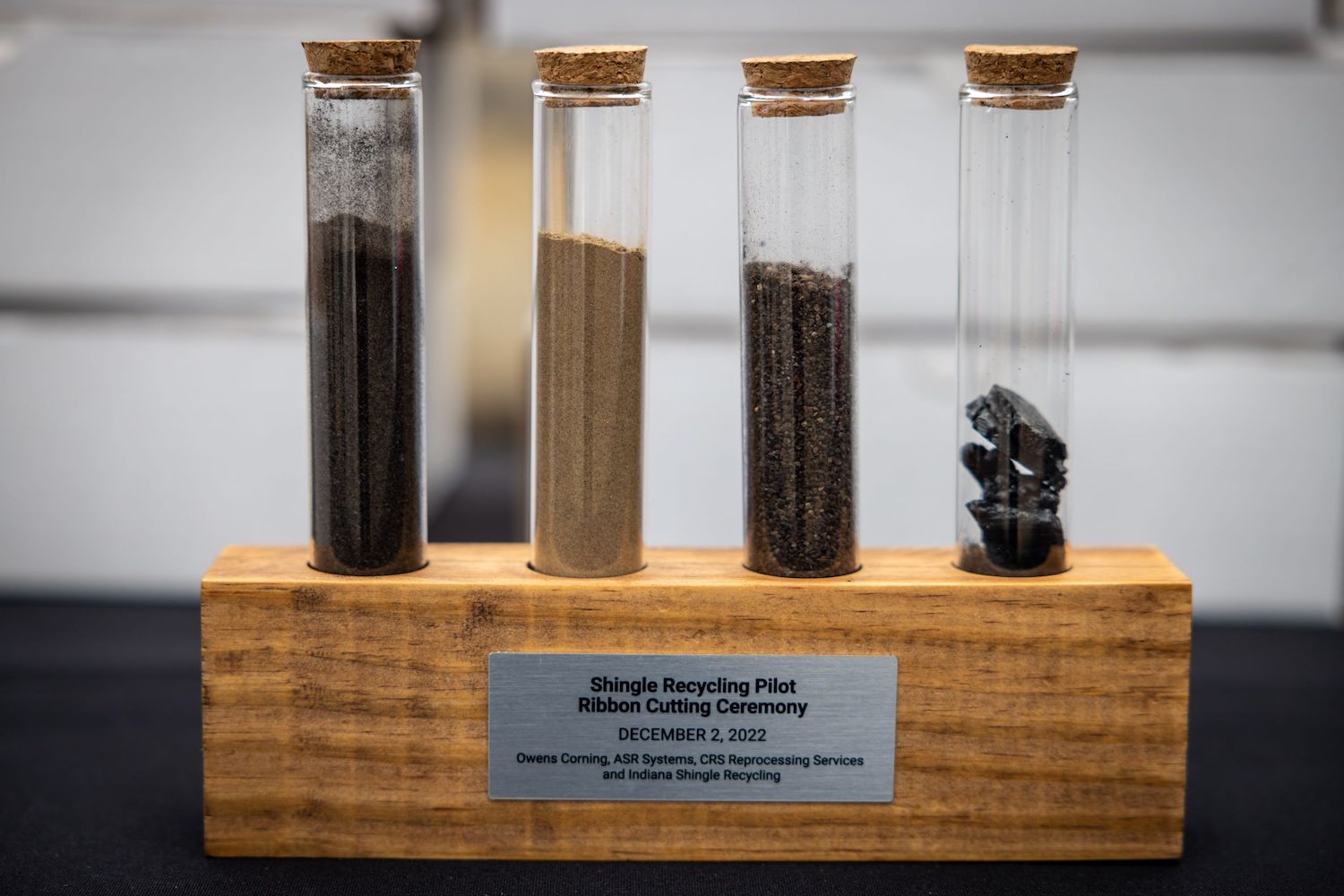
The proof is in the pudding
The shingle recycling pilot launched in December of last year, and Owens Corning and its partners have been experimenting ever since — running trials in plants and testing how recycled-content shingles will stand up to tough conditions. “We need to go through it with a special eye,” Smith said. “We want this material to be as good or better than our traditional products.”
Smith and his team believe Owens Corning’s decades of expertise give the company the flexibility and adaptability to push new processes forward. The industry has been trying to get its head around this problem for 20 years, Smith said, but he feels like this pilot is something different. “If we can prove this works and scale it, we’ve got a real game-changer here.”

“Stepping up.”
The construction industry faces significant challenges with the circularity of its materials — from concrete to steel to asphalt. Industry organizations are talking about how to increase sustainability while customers and contractors are asking for it. “It feels like we’ve gotten to a point as an industry where we all know we need to tackle these types of challenges,” Leo told us. “We’re all in. The industry needs leadership in this space, and we are happy to step up.”
The pilot is the first step toward making that happen. “We have a lot of work ahead of us,” Leo concluded. “We set that goal of 2 million tons a year, and we’ll advance toward it as fast as we can. We’ve got our marching orders.” And maybe the next time you replace your roof, it will be with recycled shingles born from a goal of making a handprint bigger than a footprint.
This article series is sponsored by Owens Corning and produced by the TriplePundit editorial team.
Images courtesy of Owens Corning
Brands Have Grown Silent on Police Violence: How Can They Do Better?

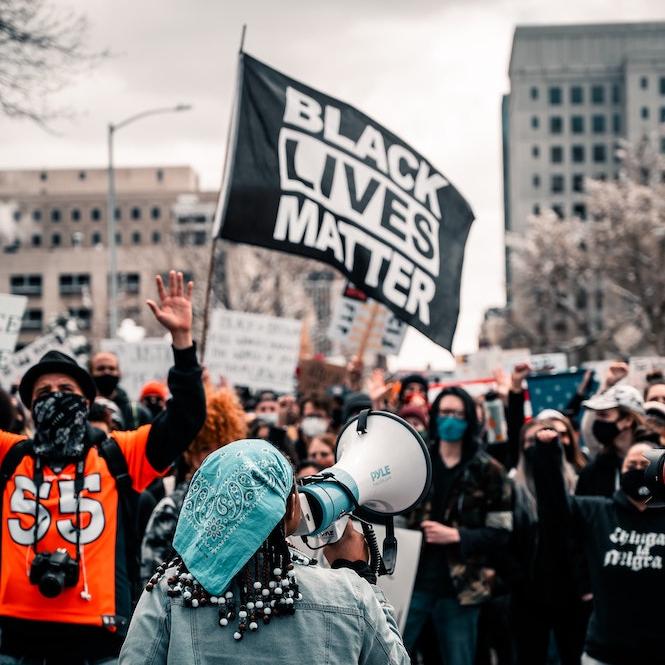
Despite increased attention on the issue — and the rollout of piecemeal reform policies in some cities — data indicates that police violence in the U.S. is actually getting worse.
The Washington Post's real-time database has recorded more fatal police shootings every year since it launched in 2015, with 2022 being the deadliest to date. Communities of color, particularly Black communities, continue to be disproportionately affected. Already this year, U.S. police have shot and killed 195 people, according to the database. Many, including the killings of Tyre Nichols, Keenan Anderson, Anthony Lowe Jr. and Manuel "Tortuguita" Terán, were highly publicized. Yet most of the brands that proclaimed to "stand with" Black communities following the murder of George Floyd in 2020 were largely nowhere to be seen.
So, why have brands gone silent on the issue of police violence, and how can they do better? TriplePundit connected with leaders in sustainability and diversity, equity and inclusion (DEI) to get a better understanding.
The hard work is just beginning
Like the Black Lives Matter movement itself, the corporate pledges made after Floyd's murder were about much more than police violence. Companies committed billions of dollars in funding to tackle systemic inequities across society and the economy. Some succeeded in creating measurable progress — including the push to get more Black-owned brands on store shelves and devote more mainstream advertising spend to Black-owned media companies.
But by and large, many of these initially outspoken brands have failed to follow through. "It’s easy for everyone to jump on the bandwagon," Emerald-Jane "EJ" Hunter, founder of the DEI-focused integrated marketing firm myWHY Agency, said of corporate stands in favor of racial equity. "But it’s hard work and often calls for financial investment for companies to actually do the work, and do it well."
Particularly during uncertain economic times, programming that is viewed as "nice-to-have" or unrelated to the business is always at risk of being cut. And unfortunately too many brands still view their racial equity work this way.
"Many brands aren’t willing to part with the investment so take the lazy route by making a statement and claims and hope, just like many things, followers and consumers will forget over time what they said they would do," Hunter told us. "The commitment simply isn’t there to do what it takes to make the shift and change, and therein lies the problem: Until companies make the investment and give it the time that it takes, we’ll never see change."
The benefits of going bold: How can leaders convince their bosses it's worth the risk?
"The issue of police violence has also become so politically charged, it’s safer for brands to not go 'too hard' on this stance for fear of being cancelled," Hunter said. While brands may be more keen to back off given the "anti-woke" political climate, consumer expectations — particularly among younger demographics — are only growing.
"Remaining quiet when police brutality continues to disproportionately impact communities of color is no longer an option," said Alix Lebec, founder and CEO of Lebec Consulting, which specializes in environmental, social and governance (ESG) issues and impact investing. "Eighty-two percent of millennial consumers expect corporations to align with their social and environmental values — and to stand up for key societal issues in real time."
Although it may seem safer to stay silent, brands that go bold — and back it up — stand to see real benefits. "Ben & Jerry’s is one of the best examples of a company and brand that immediately spoke up after George Floyd’s murder caused by inhumane police brutality in an authentic manner," Lebec said. "From its voice, consumer products, donations and stance on public policy, Ben & Jerry’s took action. This is a brand that leads with empathy and purpose."
The brand continues to work with grassroots racial empowerment and civil rights organizations like the Advancement Project, Close the Workhouse Coalition and the Power U Center for Social Change. "Taking bold positions on political topics has often helped the ice cream brand," Hunter added, citing a 2020 analysis from YouGov which found customer affinity scores double after Ben & Jerry's publicly condemned white supremacy and police violence. "The brand’s activism isn’t just the right thing to do. It also can help, in all honesty, your bottom line."
Still, what's a leader to do if their company remains hesitant? "One thing a business leader can tell their boss when they receive pushback is to look at the generations to follow and what matters to them. If their company wants to be around for years to come, they’ll soon be challenged by Gen Z and millennials for whom why businesses exist matters more than what they do," Hunter said. "You won’t exist for much longer without aligning with a cause or issue or a why that goes beyond dollars and cents."
"It doesn’t have to be specifically police brutality," she added, "but should that be the cause, then it’s worth knowing that advocacy work equals longevity for a brand. It also takes time to become the likes of Ben & Jerry's, so start now, be intentional, and practice what you preach internally and externally."
Ready to take action to curb police violence and promote equity? Here's how to start
Hunter highly recommends connecting with outside experts or enlisting an agency to help you get better about acting and communicating around issues like police violence and equity more broadly.
"This isn’t the time to risk making mistakes with a DIY approach. You’re in this boat because if you had known better, you would’ve done better," she told us. "Nothing is worse than getting it wrong. Let the experts guide you so you do it right."
For most brands, the first step in "getting it right" will start internally, with building inclusivity in operations, hiring and promotion practices, and supply chains. "It begins at home, so ensure you’re all squared away internally before making external statements that become void of truth once you’re called out on your internal practices," Hunter advised.
Lebec agreed. "In addition to speaking up, companies need to truly live the values they espouse," she said. "This includes engaging in catalytic and trust-based philanthropy, impact investing and public-private partnership, supporting public policies that value equality and sustainability, and showing up for local communities."
If brand leadership has money to invest, the way they choose to do it also makes a big difference — both in terms of maximizing impact and supporting changemakers of color who are often overlooked. "Donate and invest in local, minority-owned businesses and nonprofits that have a strong track record with local communities, are typically underfunded, and have the potential to create more thriving local economies," Lebec told us.
"Corporations can also leverage their philanthropy in ways that will attract other forms of financing to the table — such as impact investment capital — and financially support organizations that are really making a difference here in the U.S. and across developing and emerging markets," she said. "Investing directly from corporate balance sheets, for instance, could unlock billions to trillion dollars of capital for economic and social equality."
Don't have money? Lend your voice. "Support public policies that are leveling the playing field for underrepresented business owners and entrepreneurs and are pro-equality and sustainability," she advised.
However they do it, brands would be wise to recognize the urgency of getting started. "In 2023, companies need to be vulnerable, action-oriented, timely, creative and authentic — or risk losing relevancy and loyalty," Lebec said.
Image credit: Clay Banks/Unsplash
Pharmacy Fallout Over Medication Abortion Continues
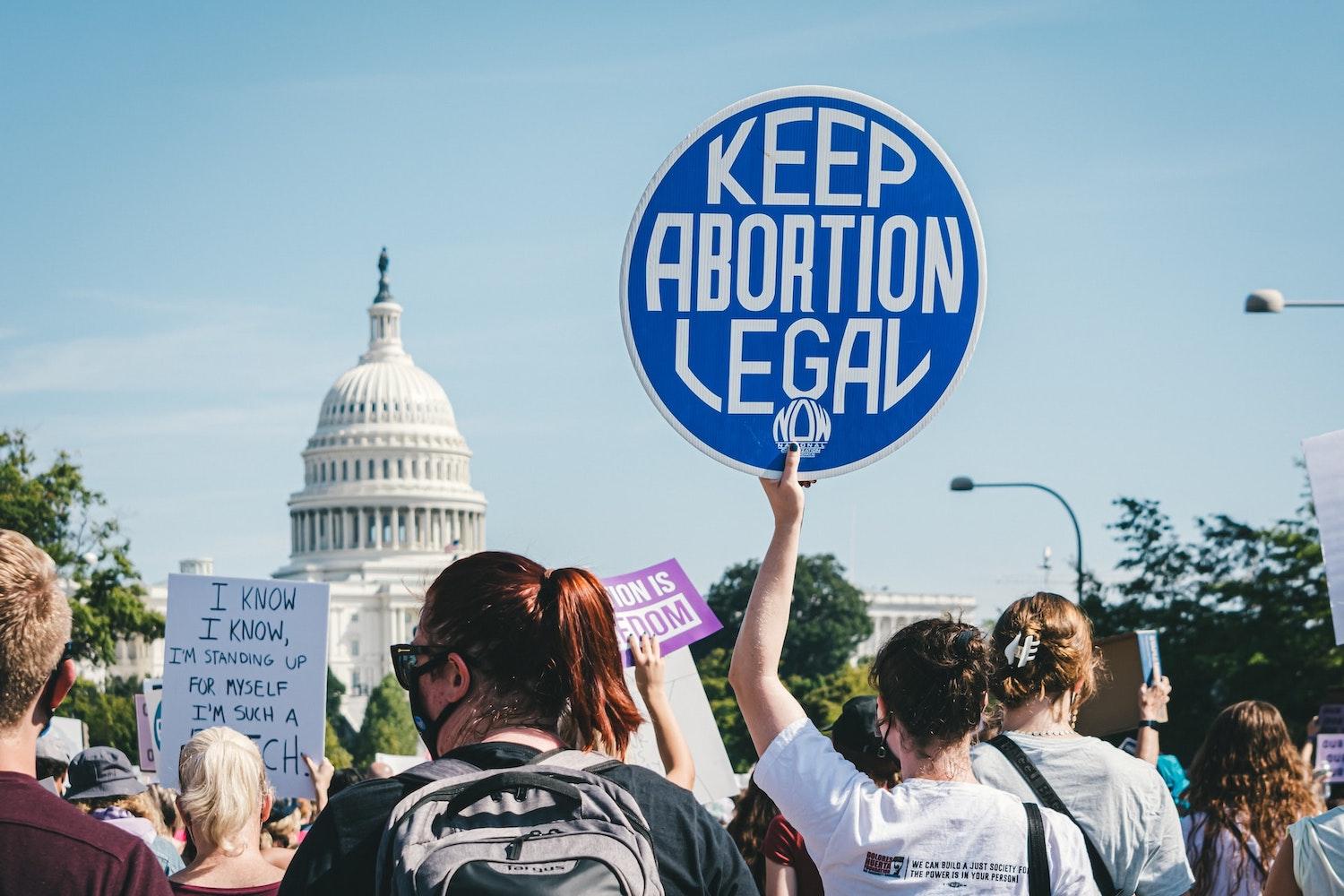
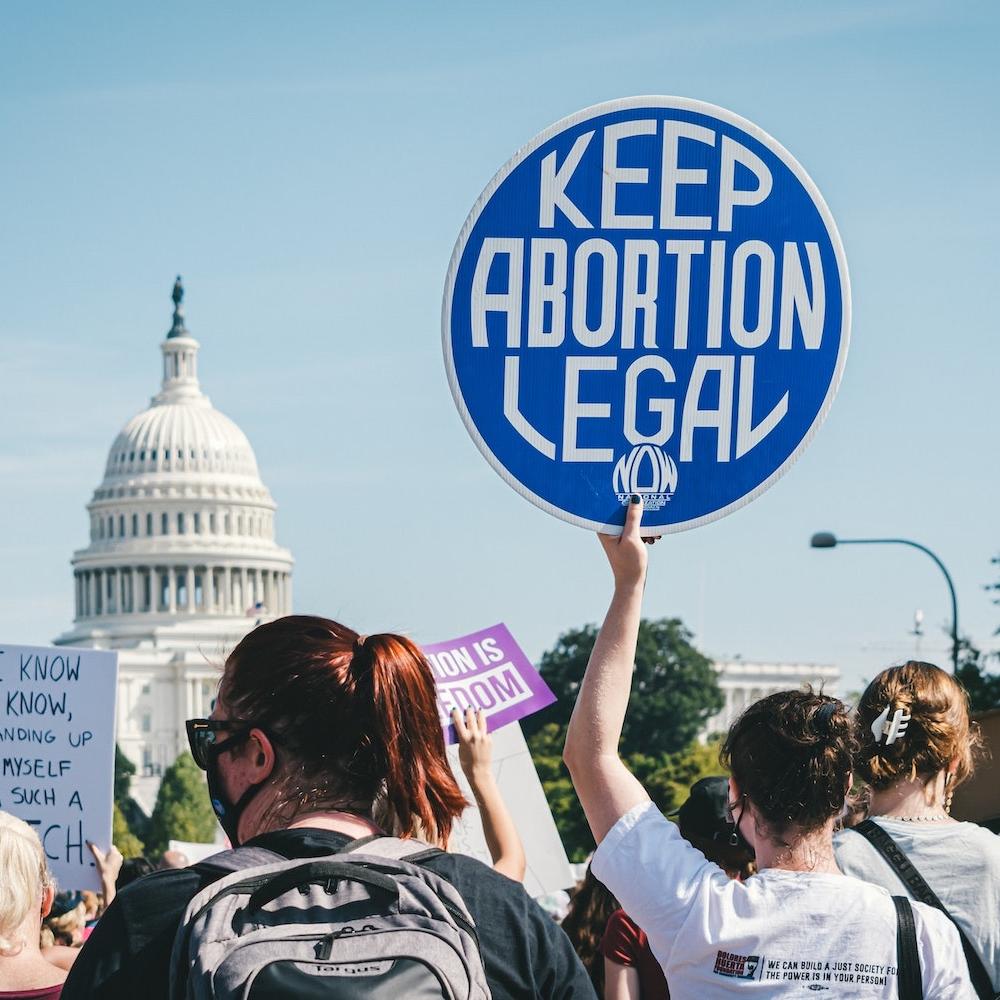
Pharmacy giant Walgreens took the tiger by the tail earlier this month when it issued a policy statement on the medication abortion pill mifepristone. Instead of clarifying matters, the company touched off a firestorm of criticism that has yet to die down.
Mifepristone under threat
Mifepristone was approved by the U.S. Food and Drug Administration in 2000 for use in terminating a pregnancy. The drug has a proven record of safety and effectiveness, and the FDA has affirmed and expanded access to the drug several times since then. In 2019, for example, the FDA approved a generic version.
During the COVID-19 lockdowns, the FDA also approved mifepristone for use through telemedicine. On Jan. 23 of this year, the agency revisited the issue and affirmed that mifepristone can be dispensed in person or through the mail by telemedicine up to 10 weeks of pregnancy. Dispensers must be certified by the FDA under its risk evaluation and mitigation strategy (REMS), known as the Mifepristone REMS Program, which standardizes the protocol for using the drug to terminate a preganancy.
The Joe Biden administration’s Department of Justice has also affirmed that the U.S. Postal Service cannot be prosecuted for delivering mifepristone by mail, even in states that ban or restrict the drug.
The FDA and Justice Department actions are intended to protect access to mifepristone in the wake of Dobbs v. Jackson, the 2022 Supreme Court decision that overturned 50 years of abortion protections under Roe v. Wade, enabling states to enact their own restrictions.
Despite these federal actions, the attorneys general of 20 states have warned Walgreens and other pharmacies that they are breaking the law if they ship mifepristone into their states.
In addition, all eyes are on Texas, where a conservative federal judge, Matthew Kacsmaryk, has agreed to hear a lawsuit that challenges the FDA’s approval of mifepristone 23 years ago. There is no precedent for a single federal judge to overturn a longstanding decision of the FDA. However, court watchers point out that Kacsmaryk is a Donald Trump appointee who is affiliated with the First Liberty Institute, described as a conservative legal Christian organization.
Vox reporter Ian Millhiser is among those noting that Kacsmaryk’s extremist decisions on abortion rights, contraception rights, and LGBTQ+ rights are “poorly reasoned” and riddled with basic errors, making it all the more likely that his decision will go against the FDA.
Why Walgreens?
Against this backdrop, Walgreens decided to clarify its position on mifepristone. “Walgreens plans to dispense [mifepristone] in any jurisdiction where it is legally permissible to do so," the company said in a statement dated March 6.
But legality on this issue is increasingly murky, and someone at Walgreens may have failed to do their homework. Though 20 state attorneys general wrote a letter to pharmacies threatening legal action over mifepristone, not all of them represent states that ban the drug.
On March 11, reporter Nathaniel Weixel of The Hill cited a Walgreens spokesman, who said the company responded to all of the attorneys general to let them know that Walgreens will not dispense mifepristone in their states, whether in person or through the mail.
That group includes AGs representing Alaska, Iowa, Kansas and Montana. Though abortion medications have been challenged in some of those states, the restrictions are currently suspended or permanently blocked in court, Weixel reported. Attorneys general from those states clearly overstepped their authority. Nevertheless, to critics it seemed like Walgreens had knuckled under.
To make matters worse, as of this writing none of the other leading pharmacies in the U.S. have taken a public position on mifepristone, including Albertsons, Costco, Kroger and Walmart, as well as CVS. That leaves Walgreens to bear the brunt of criticism alone, including the loss of a $54 million contract with the state of California, where Gov. Gavin Newsom has pushed back aggressively against Walgreens’ apparent stance.
Democratic members of Congress also turned up the heat. On March 7, Sen. Elizabeth Warren of Massachusetts wrote a letter to Walgreens seeking clarification on the March 6 statement, including whether or not the company’s policy on mifepristone was informed by medical experts and reviewed by its board of directors.
Help is on the way...?
Confusion aside, Walgreens' statements indicate it still intends to obtain FDA certification through the REMS program. “Once we are certified by the FDA, we will dispense this medication consistent with federal and state laws," the March 6 statement reads. CVS has also indicated it plans to be certified. That laid the groundwork for the threatening letter sent by the 20 anti-mifepristone attorneys general.
But those AGs aren't alone. Another coalition of 23 state attorneys general has since formed to support pharmacies like Walgreens and CVS in their decision to seek FDA certification. In their own letter, they reassure pharmacy companies that they are on solid legal footing.
“According to these anti-abortion states, ‘[a]bortion pills are far riskier than surgical abortions’ and providing this medicine 'increase[s] . . . coerced abortions.’ These claims are utterly false," their letter reads. “In a time when access to abortion is under attack — now more than ever in the past 50 years — we stand in full support of pharmacies like Walgreens and CVS becoming FDA-certified to dispense and mail these essential medications and to make them available as broadly as possible."
This represents a potentially broad and powerful pool of support for pharmacies like Walgreens. In addition to the economic powerhouses of California and New York state, the pro-mifepristone coalition includes Arizona, Colorado, Connecticut, Delaware, the District of Columbia, Hawaii, Illinois, Maine, Maryland, Massachusetts, Michigan, Minnesota, Nevada, New Jersey, New Mexico, North Carolina, Oregon, Pennsylvania, Rhode Island, Vermont and Washington.
Kacsmaryk's decision could throw all pharmacies into a public relations nightmare, not just Walgreens. However, Walgreens did put itself out there all alone, and now it must weather the consequences. A hearing in the case is scheduled for Wednesday, March 15.
Image credits: Gayatri Malhotra and Kateryna Hliznitsova via Unsplash
U.S. Postal Service Kicks Fleet Electrification Into Higher Gear
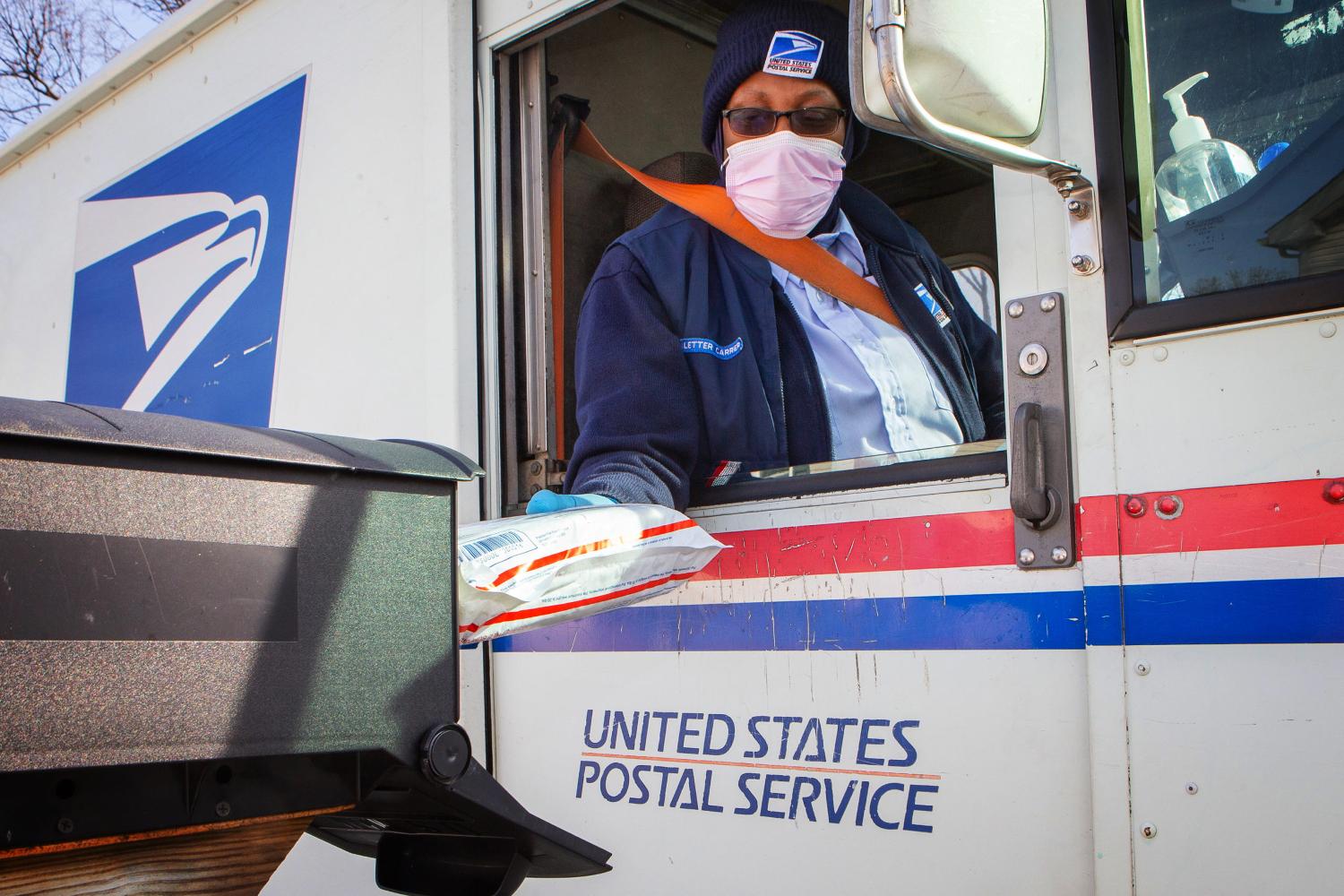

The U.S. Postal Service has relaxed its opposition to electric vehicles (EVs) over recent years. The latest breakthrough came last week when the Postal Service finally stopped insisting on custom-built vehicles to replace its ancient fleet of delivery trucks. That means more automakers will have a chance to participate in the agency’s fleet electrification efforts — and Ford Motor Co. is among the first to benefit.
The Postal Service lags on fleet electrification
The Postal Service announced a major new fleet modernization plan a little over two years ago, but it left little room for EVs. Instead, the main thrust of the initiative was to replace the agency’s existing 165,000 delivery trucks as quickly as possible. Designed in the 1980s with a 25-year lifespan in mind, the trucks have become obsolete in terms of safety and driver comfort, as well as fuel efficiency.
The Postal Service introduced its original modernization plan on Feb. 23, 2021, along with a 10-year contract awarded to Oshkosh Defense. The company was tasked with delivering a new fleet of specialized “next-generation delivery vehicles” which the Postal Service described as running either on electricity or gas.
But critics quickly noticed that the contract stipulated a mere 10 percent of the new vehicles would actually be electric. Howls of protest from electrification advocates ensued.
Postmaster General Louis DeJoy defended the plan, arguing the Postal Service did not have enough money in its budget to pay up-front for EVs. Congress responded by working to fill the funding gap.
New research has helped to further the case by demonstrating the benefits of fleet electrification. Electric vehicle advocates — including Ford and other auto industry stakeholders — also pitched in by supporting a new analysis that addresses shortcomings in the research originally cited by the Postal Service.
Hitting the gas on fleet electrification
All of that advocacy work paid off. With $3 billion in new funding from the 2022 Inflation Reduction Act, the Postal Service was able to focus more attention on fleet electrification in a new plan announced in December of last year.
The new plan still falls significantly short of the 100 percent electrification mark, but it is an improvement. The Postal Service plans to acquire a total of 106,000 delivery vehicles through 2028. Oshkosh will supply at least 60,000 of its custom-designed vehicles to that total — and at least 45,000 of those will be electric.
The Postal Service has also stated that all of its new custom Oshkosh vehicles will be electric after 2026. That timeline won’t require an about-face for Oshkosh. The company has pointed out all along that its custom vehicle designs can accommodate either internal combustion engines (ICE) or battery-electric technology. The delivery trucks are also designed to be retrofitted from an ICE to a battery as needed.
But the Postal Service appears to have reservations about Oshkosh’s ability to ramp up operations quickly enough to satisfy electrification advocates. The new plan also calls for the acquisition of an additional 21,000 EVs from various off-the-shelf manufacturers over the next five years.
Putting the pieces together on postal fleet EVs
Ford’s hand in the EV movement appears to have paid off, too. On Feb. 28, the Postal Service announced that it had selected Ford’s E-Transit electric van as its first off-the-shelf delivery vehicle. The agency plans to purchase 9,250 E-Transit vans, which will be manufactured at Ford's factory in Kansas City, Missouri.
The agency still needs to complete a supplemental environmental impact statement before the arrangement is finalized, as required by the National Environmental Policy Act. If all goes according to plan, the vans will begin arriving in December of this year.
As part of the effort to improve its EV profile, the Postal Service also engaged three suppliers to deliver a combined total of more than 14,000 charging stations, it announced in February.
What’s all this about “woke” capital?
It remains to be seen if Ford or Oshkosh will suffer any backlash from the “anti-woke” movement among Republican officeholders in more than 20 states. Though the “woke capital” canard claims to protect state pensions from mismanagement, it is simply an attempt to thwart investment in decarbonization technologies and gin up an emotional response that helps drive conservative voters to the polls.
Missouri has emerged as one of those hotspots for the “anti-woke” movement. And Republican Sen. Josh Hawley, who hails from Missouri, has emerged as a leader in the charge against “woke capital."
Another leading “woke capital” warrior in Missouri is State Treasurer Scott Fitzpatrick. Last August, the St. Louis Post-Dispatch business columnist David Nicklaus noted that Fitzpatrick and State Attorney General Eric Schmitt have been advocating against ESG (environmental, social, governance) investments, with a particular focus on the global firm BlackRock.
Nevertheless, Missouri will host a factory owned by an out-of-state company (Ford’s headquarters are in Michigan) that will help accelerate the energy transition by replacing more than 9,000 Postal Service trucks with EVs.
Similarly, Oshkosh Defense is headquartered in Wisconsin. But the company plans to manufacture its custom Postal Service vehicles in South Carolina, where State Treasurer Curtis M. Loftis, Jr. has also focused his anti-ESG attention on BlackRock.
A public statement on Loftis’s website dated Oct. 10, 2022, explains that “… these actions against BlackRock are just one step in protecting South Carolina’s financial interests from self-serving outsiders who have no stake in the well-being of taxpayers or public retirees.”
“[Loftis] continues to evaluate additional measures that may be taken to further cement the state’s independence from undue influence,” the message continues.
Image credit: U.S. Postal Service
Don’t Believe the Hype on EHS: It’s Not Just Another Name for ESG
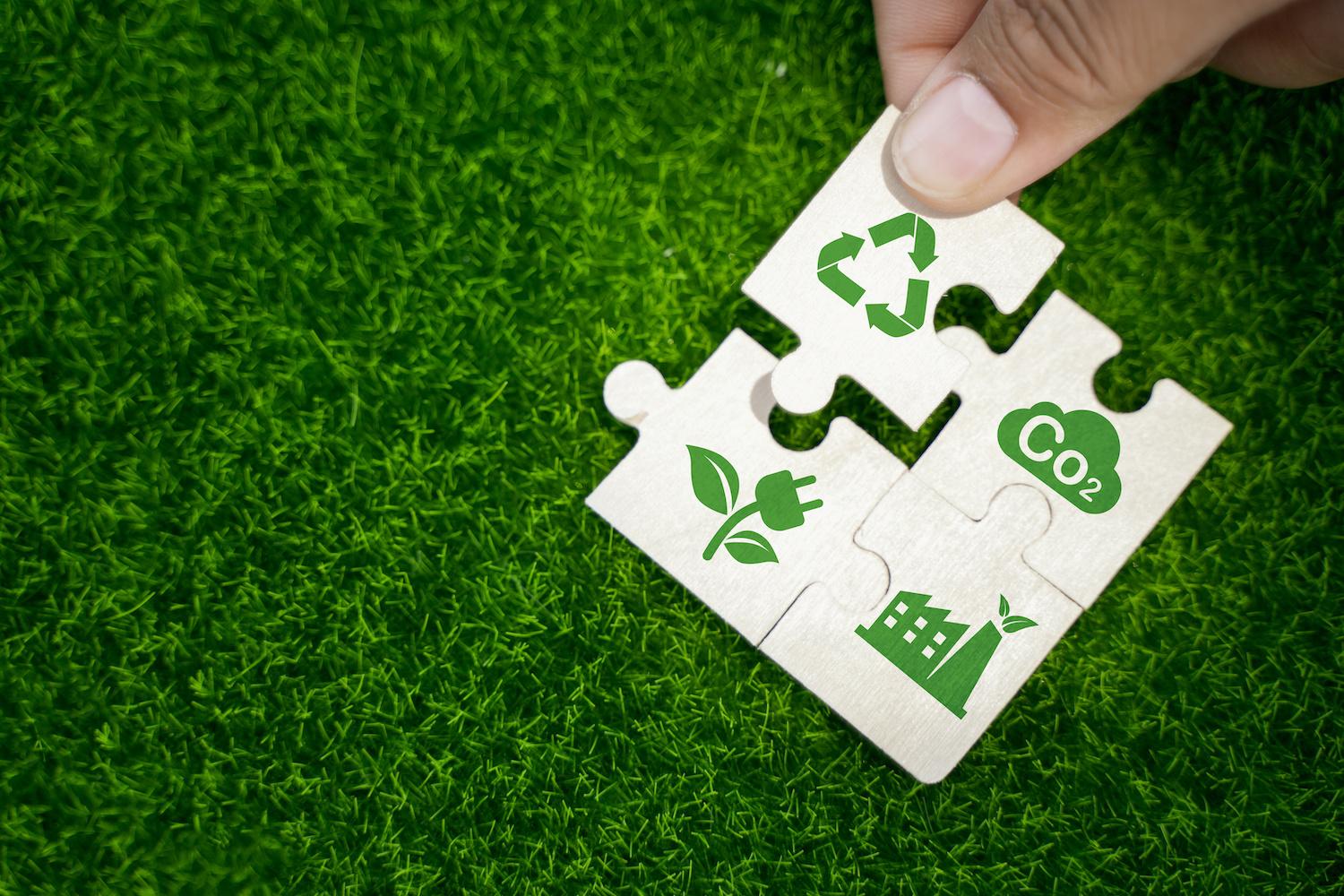
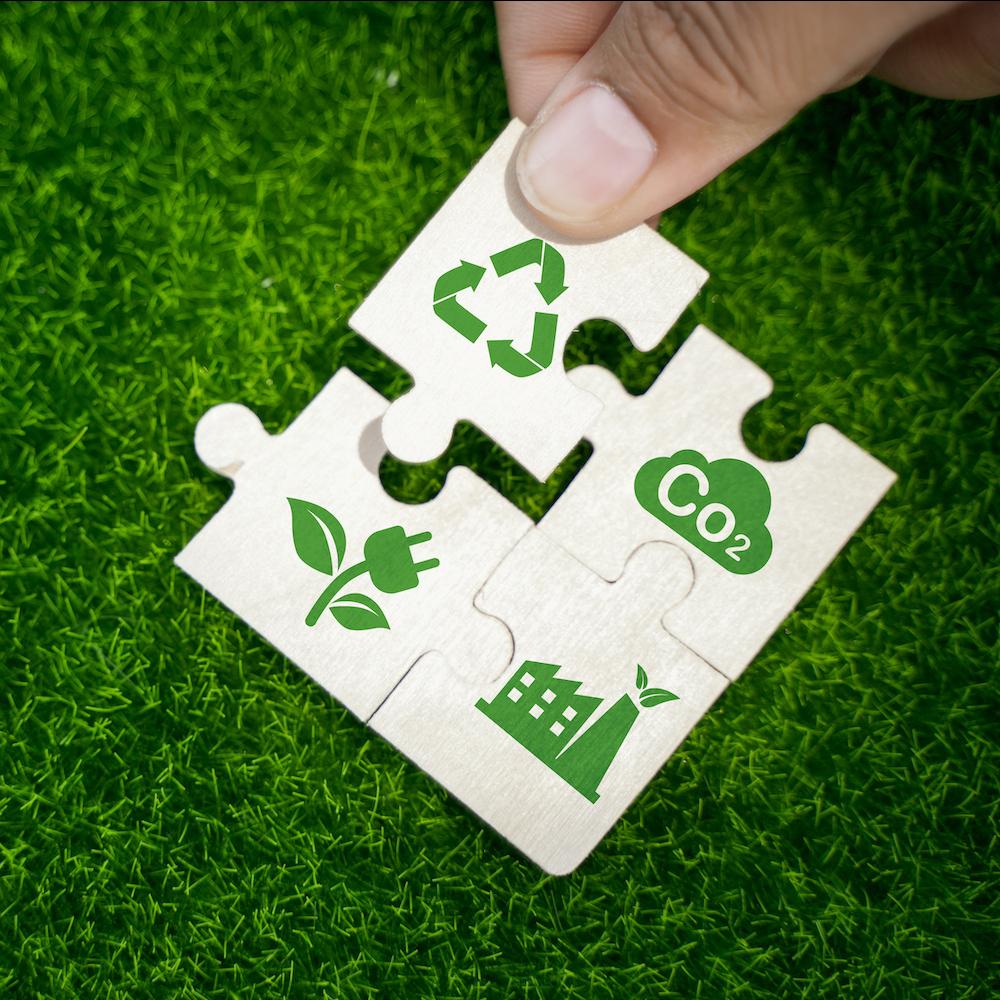
There’s a lot of confusion in the sustainability market right now, and I think a lot of it has to do with acronym overload. GRI? TCFD? CSRD? It’s a lot to keep track of, even for specialists. I’d like to sort out the confusion over one such letter scramble and explain how to distinguish EHS (environment, health and safety) from ESG (environment, social and governance): two disciplines that might seem almost identical, but are actually quite different. Let’s start with a little history on each.
EHS: Making employee safety paramount
Many companies have had EHS departments for decades. The purpose of EHS, first and foremost, is to promote employee safety. However, EHS also often tracks the impact of the business on the outside environment in the context of complying with regulations. The last two parts of EHS (“H” for health and “S” for safety) are well-established practices that report to federal agencies such as the Occupational Safety and Health Administration (OSHA) in the U.S. Over time, EHS has developed a common language for the “E,” referring to environmental contaminants like pollution, waste generation and greenhouse gas emissions. Regulatory bodies around the world have synced on common standards and fines for all components of EHS.
ESG: The new frontier
Comparatively, ESG has a much shorter history. Unlike EHS, ESG has its roots in the financial sector. It was originally conceived as a way for funds to objectively grade holdings on their sustainability measures — for example, tracking diversity, equity and inclusion programs and environmental factors for investors looking for “greener” or more socially conscious funds.
“E” in this context can refer to a broad array of environmental metrics that move beyond the question, “What waste is this company producing?” and asks, “How is the environment impacting the company, and how is the company impacting the environment?” We call this the “double-materiality” standard. That means the “E” could cover both what pollution the company is emitting (like a traditional EHS measurement would) and many other environmental impacts like materials lifecycles, water usage and reuse, economic impacts on communities affected by the company, procurement practices, and so on.
The “S” and “G” parts of the equation have an equally broad scope that can cover everything from diversity initiatives, to community relations, to executive compensation, to ethical guidelines for employees. Unlike health and safety, these areas are still being developed in the standards and regulatory landscape.
Compared with EHS, ESG is an evolving discipline, and organizations are still developing metrics and best practices to deliver on ESG’s ambitious goals.
How can EHS complement ESG?
So while there are areas of overlap — specifically in greenhouse gas emissions and following OSHA standards that might fall under “governance” writ large — ESG’s scope is so much larger that it can’t be seen by looking through a narrow EHS lens.
Some organizations make the mistake of eliding the two departments, never defining where one department ends and another begins. In many cases, former EHS staffers are being transitioned into senior ESG roles, blurring the lines even further.
For these reasons, it’s best to think of the two initiatives as complementary, with EHS nested within ESG, which has a broader scope.
Here are a few typical questions I get about EHS and its relationship to ESG:
Q: Do I need to start with EHS to begin an ESG initiative?
A: No, though if you want to have an award-winning ESG initiative, it doesn’t hurt to build on what you’ve started already in EHS. Even if you are starting from scratch, EHS represents only part of the whole. The ESG initiative will include EHS topics, but you won’t be able to pass off EHS as a comprehensive ESG program.
Q: How do I “convert” an EHS into an ESG program?
A: The pathway to a mature ESG program will vary widely, but we recommend having two separate initiatives, one focused on sustainability writ large (ESG) and another that focuses on core health and safety compliance. The most important thing is to realize that, professionally, EHS and ESG are two distinct skillsets. We don’t recommend simply adding “sustainability” in an EHS job description after you’ve made the hire, then calling it a day on ESG.
Q: If I’m already measuring EHS metrics, can I use that data for ESG as well?
A: Probably, but EHS data alone will not cover everything you need. One common misperception is that health and safety initiatives within EHS can substitute for social and governance initiatives within ESG — for example, that a safety initiative dealing with ergonomics (typically a health and safety issue) could also count as improving the social aspects of the workplace. Or that the compliance and regulatory aspects of EHS could check off some “good governance” boxes on the ESG side.
Asking EHS staffers to cover everything that falls under ESG’s “S” and “G” categories is like asking a general practice doctor to diagnose and plan treatment for a tendon tear in your knee. The GP might give you some well-informed advice, but you’re probably better off going to the knee specialist if you want to get it permanently fixed.
We’re seeing a bit of an ESG gold rush as sustainability becomes a must-have for investor funds, and new standards and regulations for things like value-chain emissions (so-called Scope 3) have either been released or are coming out soon. In the rush to get an ESG program up and running, it may be tempting to essentially rebrand EHS and call it a day. But that would be a mistake. The better move is to treat your existing EHS program as a building block while figuring out what kind of ESG program you want to build.
This article series is sponsored by FigBytes and produced by the TriplePundit editorial team.
Image credit: Naiyana/Adobe Stock
Colorism and Texturism Are a Rampant Part of Workplace Racism, Research Shows
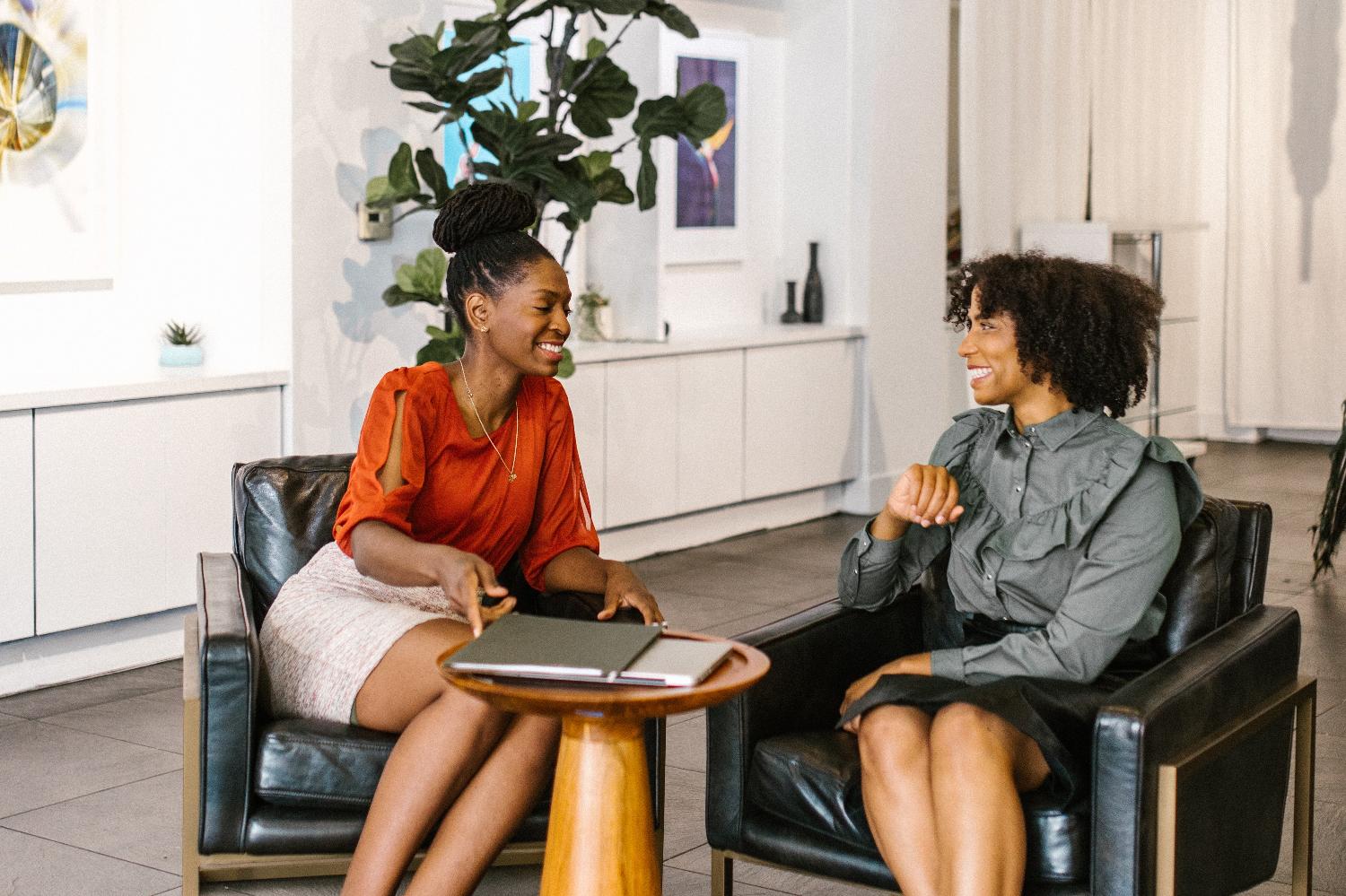
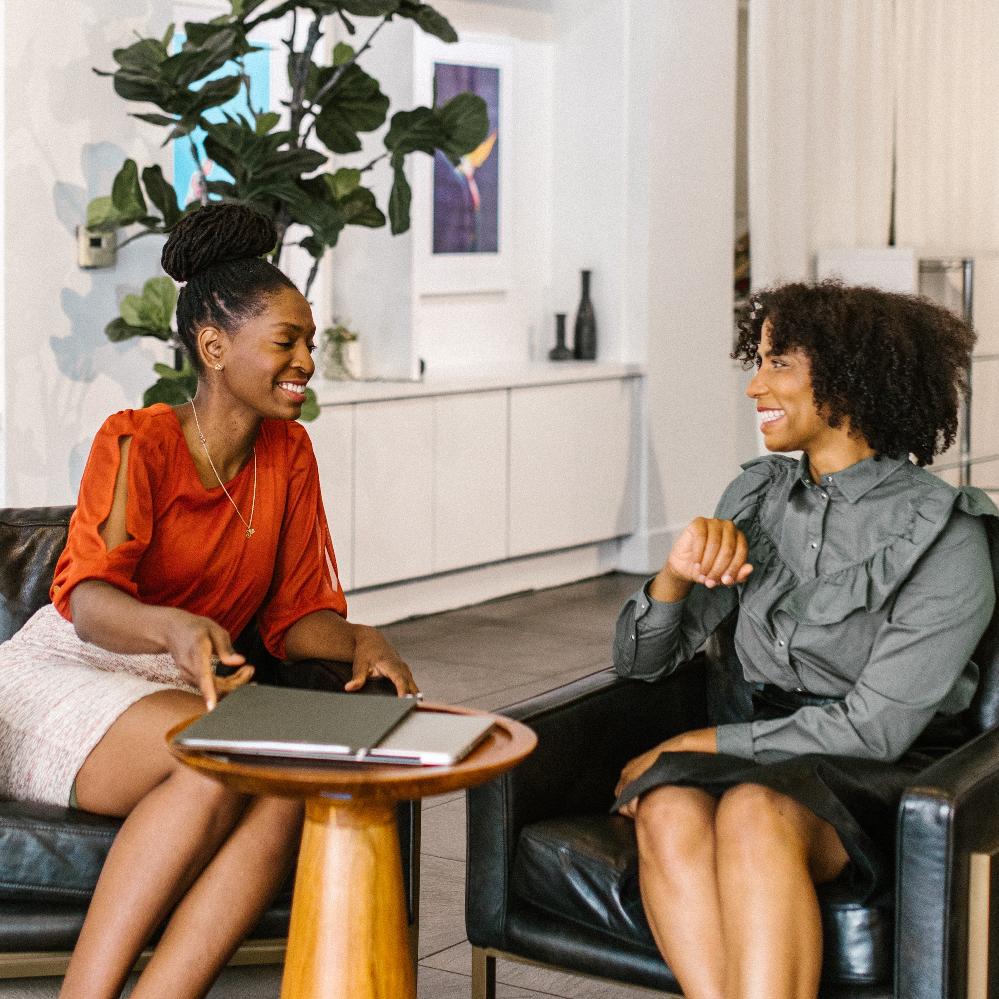
New research from Catalyst is shedding light on the intersectionality of racism in the workplace. Half of women from marginalized ethnic and racial groups report experiencing racism at their present job. But for dark-skinned women, that figure jumps to almost 70 percent. And for queer and trans women of color? It’s 63 and 67 percent, respectively. TriplePundit spoke with Harvard MBA and author Zee Clarke about how colorism, texturism and racism in general are harming women in the workplace — and what can be done about it.
Non-prototypicality
“Basically those that have a darker skin tone and features — whether it's our noses or tighter curls in our hair — people that have darker skin tones experience more discrimination,” Clarke explained. In the Catalyst study in particular, "the range of discrimination for those with lighter skin tones was that 34 percent of them experienced racism," she said.
That’s far lower than the rate of discrimination experienced by darker-skinned women and lower than the average for women from across all marginalized ethnic and racial groups. Clarke broke down one reason that could be, as it relates to racism in general. “In my book, 'Black People Breathe,' I talk about what they call the theory of non-prototypicality which is when we fall outside of the prototype,” she said, explaining that non-prototypicality leads to invisibility. “I actually wrote a LinkedIn newsletter article called 'The Invisible Woman.' Basically, when we are in the workplace, we often feel like we are not seen or heard.”
But this theory could also explain why lighter-skinned women report less racism in the workplace as they are that much closer to the expected prototype. “When you get to the darker skin tones, it’s as high as 70 percent — that's colorism,” she said.
The career repercussions of racism, colorism and texturism at work
Racism, colorism and texturism don’t just hurt women’s happiness, mental health and general well-being — they have profound effects on women’s careers as well. “So how this manifested? In the study that I describe in my book, it’s that when Black women say something in a meeting, people will remember what was said, but they wouldn’t remember that the Black woman said it,” Clarke explained. “But when a white man says something, they remember what was said and they give the attribution. People know that ‘Bob’ said X. That obviously limits our ability to build a personal brand if we are invisible.”
“Another big issue is just access — access to upward mobility,” Clarke continued, describing the concrete ceiling that women of color face. “The glass ceiling can be broken, but the concrete ceiling feels like it can’t be broken for a number of reasons."
One of those is access to sponsorship. In particular, Clarke pointed to a 2022 Mckinsey study — which showed that Black managers are 65 percent more likely to progress in their careers if they have a sponsor, yet only 5 percent of up-and-coming Black employees have one, significantly less than their white counterparts. "When you have a sponsor, you’re going to get promoted,” she explained.
Unfortunately, non-prototypicality plays a role here, too. Women of color have little chance of sponsorship considering that C-suite management is dominated by white males who overwhelmingly take those most like themselves under their wings.
Micro-aggressions are macro-aggressions
There is little if any distinction between micro-aggressions and outright discrimination, Clarke said. “What's called micro-aggressions actually just becomes really macro and impactful.” She gave the example of a friend who was labeled "not a team player" in her performance review because she dodged an intrusive manager who was trying to touch her hair.
Natural Black hair is subject to a lot of unwanted attention and discrimination — from the uncouthness of those who can’t keep their hands to themselves, to being targeted by security and even state-sanctioned discrimination in the workplace.
“We all know that the Crown Act did not pass,” Clarke pointed out. “Which is that it's currently legal in the United States for a Black person to be rejected for a job specifically because of our hair. Is this a micro-aggression or outright discrimination? I’d say the hiring manager might say, ‘I wasn’t aware of it, it was unintentional.’ So then that might get characterized as a micro-aggression, according to the dictionary, but I would call that outright discrimination because we did not get a job and it's legal to do that.”
What can leaders do?
Clarke gave 3p a rundown of ways that management can combat racism in the workplace, starting with: “Amplify our voices!”
“It's so important for allies to use your privilege to amplify Black voices. What does that mean? I mentioned earlier that we often tend to be invisible, that people don’t attribute any of our work or our thoughts to us, so it's hard to build our personal brand,” she explained further. “So I would say, give Black people opportunities for visibility. Whether it is speaking in front of big teams, whether it’s special high-visibility projects. And also mention us when we are not in the room. Highlight our wins with key leaders and cross-functional teams. Help us build our personal brand, because we are invisible.”
Clarke also mentioned how important it is for leadership to create an environment that is conducive to all sorts of backgrounds and viewpoints. “The Catalyst study that I referred to, they found that curiosity was a key component to doing that. And how do you demonstrate curiosity? I’d say, ask for our opinions. And actually, listen to them.”
Image credit: RODNAE Productions / Pexels
Few Companies Are Ready for the New SEC Climate Disclosure Rules, But Experts Say It’s Not Too Late


In boardrooms and C-suites across the U.S., executives who are paying attention are likely wringing their hands — wondering just how prepared they are to meet the Securities and Exchange Commission's (SEC) upcoming climate disclosure rules. The new rules are expected to force thousands of companies to disclose the full scope of their greenhouse gas emissions. This will be the first time that they have to account for emissions across the entire business cycle — and for many, that includes supply chains.
The SEC is expected to finalize the climate disclosure rules this spring, with the aim of enhancing and standardizing climate-related disclosures for investors. It plans to do so by requesting that companies provide climate transition plans. Companies with revenues over $75 million will have to report not only on their Scope 1 and 2 emissions — which come from their own operations and the electricity they buy — but also Scope 3, which includes emissions from both their supply chains and customers. The SEC fact sheet indicates that companies could be required to do this as early as 2024, using their 2023 numbers.
A new level of rigor required for the SEC's climate disclosure rules
But are companies prepared for the level of transparency required by the SEC? Not so much, says Alex Saric, chief marketing officer at Ivalua, a procurement technology firm that specializes in supply chain sustainability.
“Overall, I think very few companies are truly prepared for this,” Saric told TriplePundit.
While a number of companies have been collecting and making public disclosures about their carbon and GHG emissions for some time, they haven’t been consistent about doing so. “It is generally incomplete, and the methodology is perhaps sloppy and not up to the standards the SEC is requiring," he explained. "Much more rigor and thoroughness will be required given the SEC mandates and the potential fines and other implications of the new rules.”
Companies have a lot to contend with these days — from supply chain resilience to the effects of inflation. Climate disclosure may be one thing leadership has yet to focus on, at least partially because the final rule is not yet in place.
Betting on “weaker” rules could backfire
In fact, some companies may think they are buying themselves time by not taking action yet. Especially after SEC Chairman Gary Gensler told CNBC the agency was considering “adjustments” to the rules that some observers think could lead to the new requirements being “watered down."
“It’s anyone’s guess whether or not they will do that,” Saric said. “But it is highly risky for companies to bank on that. Even if they allow more of a grace period to comply, or change some aspect of the Scope 3 emissions requirement, it will most likely still go into effect. And if you start to move now, you are ahead of the game.”
Inaction is a “wasted opportunity”
The biggest risk of inaction is “a wasted opportunity,” Saric continued. “If companies wait until the last minute to get the transparency the SEC is requiring, they may find that it is not as rosy a picture as they had hoped, that the information they will need to disclose is not consistent with statements or pledges they have made in the past. And that’s not ideal at a time when they can be increasingly criticized for greenwashing. And in the worst-case scenario, some companies underestimate how much work is involved and fail to meet the minimum due diligence required by the final deadline and are subject to fines and penalties as a result.”
It's much better to be prepared to meet the growing expectations for corporate climate disclosure and action. “The biggest opportunity here is to really be positioned as a leader in an area that is increasingly important to investors, to customers and to employees," Saric said. "By being proactive and taking action up front, [companies] can identify areas they can improve. Even if they can’t address them now, they can start implementing concrete plans by being able to disclose that information. It shows they are a leader in a space that’s very important.”
The challenge of Scope 3 emissions
Saric acknowledges that it is a challenging task — especially for Scope 3 emissions, which account for up to 75 percent of a company's total footprint, according to the Principles for Responsible Investment, a group of socially conscious investors backed by the United Nations.
“Scope 3 is not just suppliers but the entire depth of the supply chain, from extraction to the transport of materials, all the sub-tiers,” Saric explained. “While many companies may know who their immediate suppliers are, very few have a view into their sub-tiers. Gathering this information is a very complex exercise.”
Message to suppliers: We’re all in this together
Supplier engagement will be key, Saric added. Collaboration — not dictums from above — will be the way to win cooperation from valued suppliers, he advised.
“Companies will have to engage, in some cases, thousands of suppliers — most of which won’t be affected by this requirement," he told us. "So they have to do it in a way that is both consistent and scalable and also feels mutually beneficial to their suppliers, rather than just issuing a demand for emissions data. If they build the right foundation, and the processes and mechanisms required, companies will be in a much better place once the SEC rules take effect.”
Image credit: Li-An Lim / Unplash